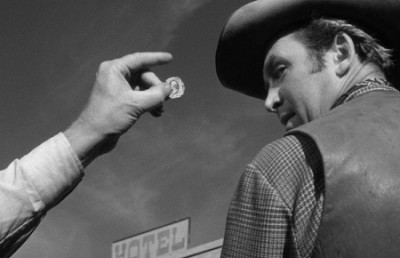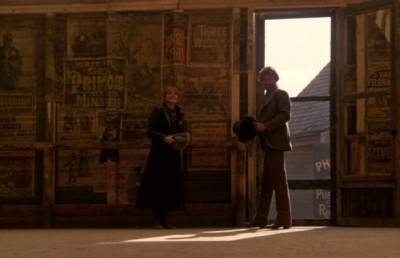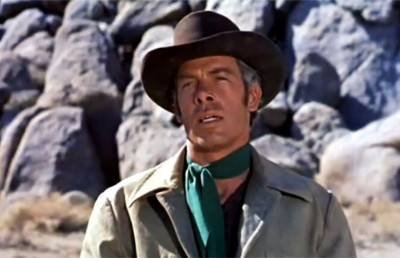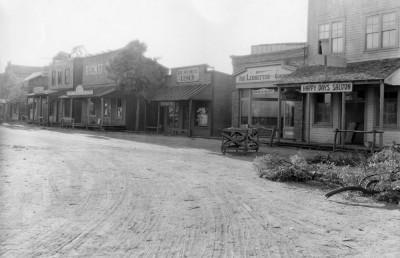The Great Silence: Guns, Morality and Death
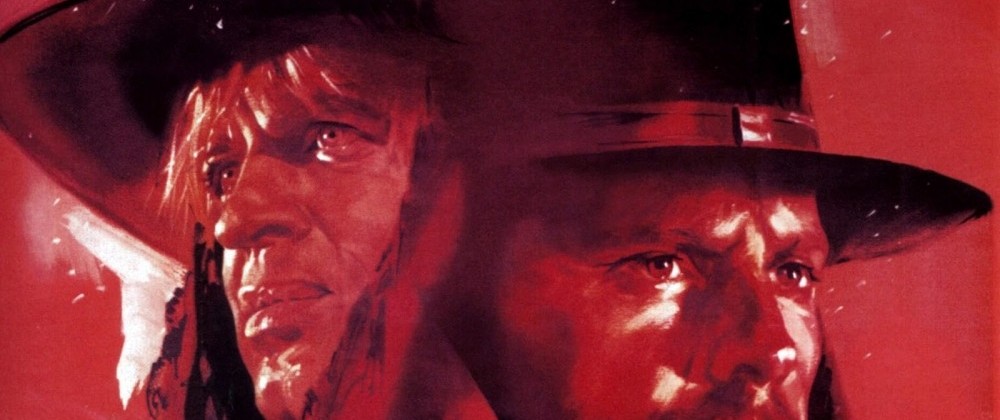
I have seen Sergio Corbucci’s seminal Spaghetti Western The Great Silence several times on DVD, but recently I had the opportunity to see a 35mm print of the film in the theatre (Nov. 24, 2012) at the Montreal Cinémathèque québécoise. Its director is one of four great “Sergio’s” that made their mark during the heyday of genre cinema in Italy, Sergio Corbucci, Sergio Sollima, Sergio Martino and, of course, the better known Sergio Leone. Of the two friends who accompanied me to the screening, one liked the film, the other did not, the latter adding, “just because it’s grim, does not mean it was good.” In fact the grimness of the film is what binds the film to its 1968 context, and of Westerns of the time (and most remarkably, Spaghetti Westerns). After-all, one of the defining differences between the American Western and the Spaghetti Western is that in the former, moral ideals exist, often found in a flawed but heroic ‘gunfighter’ figure who knows the way of the gun and of killing, but displays a higher sense of when to use these skills, usually in contrast to a sadistic killer. In his excellent overview of the initial reception of Spaghetti Westerns by American critics, William McClain notes that the elements that American critics first responded to in these twisted Westerns (negatively) was the higher levels of violence, the sadism, and what they perceived as a misunderstanding of the Western as morality play and the way the Western enacted the myth of “nationhood”. But that was Leone’s point: “I am showing the Old West as it really was…Americans treat westerns with too much rhetoric” (McCain, quoting Leone, p. 52).
A good indication of these differences is a studied analysis of the way the opening of The Good, the Bad, and the Ugly is both an homage to and revision of George Stevens’ Shane (Leone is on record expressing his admiration for the Stevens film). In Shane we see a gunfighter Shane (Alan Ladd), from the partial point of view of an impressionable young boy named Joey (Brandon De Wilde), ride in from the wide expansive landscape like a knight in shining armor, dressed in a gorgeous buckskin vest jacket. At one point in the shot he is framed perfectly in-between deer antlers. The boy is fair skinned and blond, and is playing with a rifle. He runs off to tell his father (Joe Starrett, played by Van Heflin) about the stranger. When Shane arrives at the perimeter of the homestead he draws the boy into a conversation. In TGTBATU (the scene in fact is the second scene of the film, after the introduction of Tuco) the boy out in front of the homestead is dark skinned and is working, not playing, riding a mule around a circular water mill (establishing a circular motif which concludes with the three-way climax between Blondie, Tuco and Angel Eyes in a circular cemetery arena). As the figure on a horse (Lee Van Cleef as the ‘Bad’) nears, unlike in Shane, the lone figure strikes fear in the boy, and he runs off to alert his parents of the stranger. In Shane the ‘intruder’ ends up defending the Starrett family from the ruffians hired by the land baron. In TGTBATU Angel Eyes (Lee Van Cleef), who has been hired to kill the boy’s father, shoots the man dead and his older son (who only enters the scene after he hears gunshots in the house).
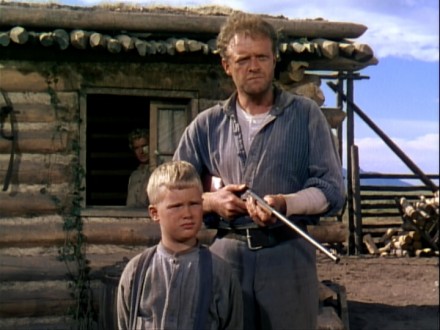
Another interesting point of difference is how the gun is used as a moral tool in Shane (and American Westerns in general), a weapon which all must learn to use for safety, honor and self-defense. Right from the opening scene in Shane the gun represents much: it is a toy, a weapon, a reflection of moral character, and a tool which must be learned and used with care, attention and skill. The motto ‘the right to keep and bear arms’ (often shortened to the ‘right to bear arms’) was first cited in the 1689 English Bill of Rights. But while the right is only protected by a common law in most Nations, in America it is protected by the U.S. Constitution (Wikipedia). Tellingly, every conflict in the opening of Shane is resolved with a gun. To begin the boy is playing with a real rifle. When Shane arrives his gun is clearly visible in his holster. Joe offers Shane some water. As Shane takes a sip of water the boy walks behind him and cocks his rifle. The sound of the rifle causes Shane to instinctively spin around with great speed, his hand deftly gripping his gun. The thought that a gunfighter was that close to shooting a little boy at such close range is alarming. The father notes, “You’re a little touchy aren’t you.” The boy explains, “I just wanted to show you my rifle….You can shoot I bet.” “A little bit,” replies Shane sarcastically. At this point a group of men (working for a land baron named Riker) are seen riding toward their farm. The father takes the rifle from the boy, converting it from a toy to a weapon of self-defense. Ruffled by the oncoming Riker gang, Joe tells Shane to leave:
Joe: Don’t forget to close the gate on your way out.
Shane: You mind putting down that gun…then I’ll leave.
Joe: What difference does it mean, your leaving anyway.
Shane: I’d like it to be my idea.
Joe then drops his gun and Shane gets on his horse and leaves, apparently. This brief stand-off between Shane and Joe is telling, a show of pure physical strength between them, with Shane subtly emasculating Joe by proving his superiority with the gun by getting him to lower it.
The six men on horseback arrive at the home. One of the men mockingly points at Joe’s rifle and says, “Expecting trouble?” another subtle use of guns as a way to demean and intimidate. Joe holds his rifle down toward the floor and drops his head in moral defeat, made more hurtful by the presence of his son and wife. The Riker ruffians give Joe and the other ‘squatters’ (as they refer to them, rather than homesteaders) an ultimatum: leave by snow fall or get ‘blasted’ off the land. Joe puts up a strong front but is obviously over-matched and out forced, six to one. While replying to the gang leader with raised voice, Joe’s wife senses possible danger and walks to her husband and puts herself in-between Joe and the line of fire, placing her hands on his rifle to stop him from possibly raising it. At this point Shane surprisingly appears from around the corner of the house, leaning on the side of the house right behind the Starrett family, with his gun in plain sight. The return of Shane changes the whole dynamic of the exchange, sapping the ruffians of their braggadocio. A close-up of the gang leader shows his acknowledgement of Shane’s presence, as a reverse cut to Shane looking back pits the two men in a staring contest. A second man asks, “Who are you stranger?” to which Shane replies, “I’m a friend of Starrett’s.” Reinforced by the presence of Shane, Joe tells the men to “get off his claim,” and they turn and ride off. The power of the gun, or Shane’s ability with the gun, saves the day. The moral superiority of Shane, a killer nonetheless, over Riker’s cut throat imperialists is embodied through his confidence with a gun.
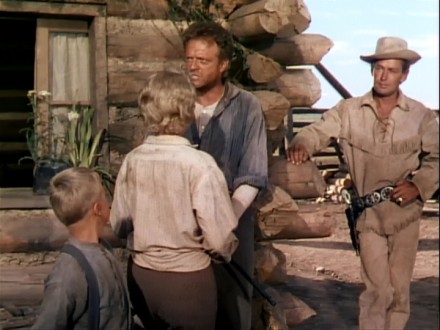
In TGTBATU the gun becomes merely a tool of survival (in every sense), not one of braggadocio or intimidation. Angel Eyes never bears his gun during the altercation with the homesteader. When the farmer’s attempt to buy Angel Eyes off does not work (to the bribe Angel Eyes replies, “I always finish off what I’m paid for”) the farmer goes for his gun as a last resort, but Angel Eyes easily bests him by shooting him from under the table they were both seated at a few moments earlier. As Angel Eyes collects the money from the table the older son enters the room from a staircase behind with a rifle, but he too is easily defeated by the speed of the professional killer. It is clearly a case of survival of the fastest. The implied moral superiority of the farmer or his son plays no role here.
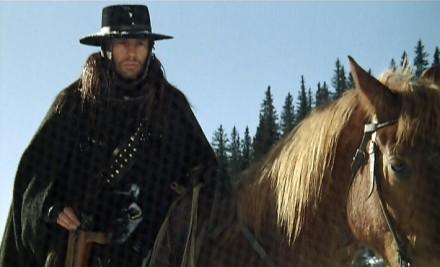
In The Great Silence the gunfighter Silence (the mute gunfighter played by Jean-Louis Tritignant, pictured above) sports an unusual box-shaped gun, a Mauser Bolo automatic pistol (Cox, p. 192) and his eventual killer bounty hunter Loco (Klaus Kinski, named Tigrero in the Italian version) a conventional gun. However, the moral code common to the American Western is stripped aside. In Shane the Ladd character is morally superior to the hired hands who prey on the farmers, and this moral superiority is translated to the combat zone, where Shane kills Riker’s hired gun, a great performance from Jack Palance as the laconic Jack Wilson. Both Loco and Silence are hired killers, but whereas Silence only kills bounty hunters (we learn through a flashback that Silence’s parents were killed by bounty hunters, who in turn slit his throat to silence him), hence operates on a moral code of ‘justified’ vengeance, Loco will kill anyone with a price on their head, including men and women, or anyone who gets in his way. Unlike in Shane, this moral superiority does not translate to some honor code: in the film’s climax the ruthless Loco kills Silence, his lover Pauline (San Francisco born American actress Vonetta McGee), and a saloon full of hostages. In the opening scenes of The Great Silence Loco kills Pauline’s husband, an outlaw named James Middleton. Pauline, an attractive dark skinned beauty in turn offers Silence $1000.00 to kill Loco. Over the course of their business deal they become attracted to each other and become lovers (sex between a white man and a black woman being another reflection of the film’s progressive politics).
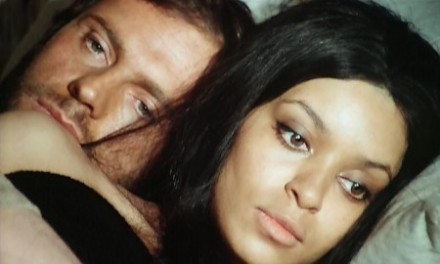
To return to the print I saw, it had both German and French sub-titles and the original (and aesthetically right) downbeat ending where Loco (Klaus Kinski) and his henchmen shoot Silence in both hands leaving him defenseless (enacting a twisted poetic justice since Silence would often shoot his victims in the hands, perhaps a Freudian response to his own mutilation). Loco then stares Silence down, extending his moment of power, before killing both Silence and his lover Pauline. Then Loco enters into the saloon and gives the Ok for his henchmen to brutally finish off the dozen or more ‘criminals’ he was holding as hostages (men, women, peasants, not hardened criminals). The Fantamos DVD contains the happy ending as a special feature. Corbucci was asked by his producers to shoot this happy ending for the Asian and North African markets. In the re-shot ending sheriff Burnett (Frank Wolff, who dies in the original version) comes back to save the day by shooting Loco and then, along with Silence, the rest of Loco’s gang. Reunited as a romantic couple, Silence and Pauline see the sheriff off.
Like many Spaghetti Westerns, the hero is often brutally beaten (think Clint Eastwood in A Fistful of Dollars). Before the showdown with Loco Silence nurses a bullet wound and then, while trying to stop corrupt local banker Pollicut (Luigi Pistilli) from raping Pauline, gets his right hand scalded by Pollicut’s bullish assistant Martin (played by Spaghetti Western regular heavy Mario Brega, who gave a similar beating to Tuco in Leone’s The Good, the Bad and the Ugly). Pauline pleads with the injured Silence to leave town, but Silence prefers to go into town to challenge Loco, who is holding a saloon full of hostages who he’ll kill if Silence does not accept his challenge. Pauline warns him that it is a trap, a suicide mission, but Silence’s fate is sealed. His martyrdom is completed in the great penultimate image of the film: the camera shooting from inside the saloon through the murky window, framing the two dead characters, Silence and Pauline, hanging martyr-like and Loco and his men riding out of town. The saloon’s murky window itself a visual reflection of the film’s ‘murky’ moral waters, and the general social pessimism found across many of the great Spaghetti Westerns. Everything about the film’s aesthetic tone and political thrust is sabotaged by the happy ending that Corbucci was asked to provide by his producers for the Asian and North African markets.
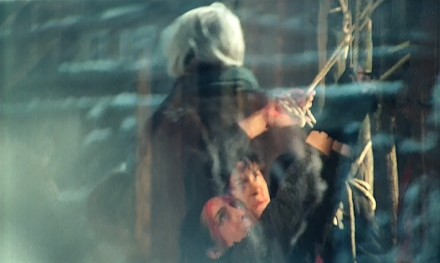
Martyred Victims
The film is supported by one of Ennio Morricone’s greatest scores (and that is saying a lot!), fusing poetic, melancholic passages of the main motif, with more splintered, aggressive, minimalist, trance-like, at times percussive passages. Along with the score, the film is original in so many ways. The wintry setting that echoes the ice-cold killer Loco (a few years before Altman’s similarly anti-capitalist McCabe & Mrs. Miller), the brutal tone, the cynical political subtext of high ideals dying a quick and ugly death (apparently Corbucci was inspired by the recent deaths of Che Guevera and Malcom X), and its representation of inter-racial sex (and love) between Silence and Pauline (as James Newton also noted in his Offscreen essay (linked below), sharing the use of a sympathetic black character who also dies in another seminal genre film of the same year, Night of the Living Dead). According to filmmaker Alex Cox, a huge fan of the film, “Corbucci’s widow, Nori, told [producer] Katsumi Ishikuma that her husband had the deaths of Che Guevera and Malcom X in mind when he conceived The Great Silence. Malcom was assassinated on 21 February 1965; Che captured and killed on 8 October 1967. For the radical, for the revolutionary, both deaths were terrible news. You could only take on the powerful and the wicked for a short while, it seemed, before they crushed you” (Alex Cox, 1000 Ways to Die, p. 189). The film achieves a brutal realism by demonstrating what other Westerns never dared or even thought of showing. For example, when a group of peasants ambush sheriff Burnett (another San Francisco born American actor Frank Wolff) and ask him for his horse, Burnett asks what so many people could possibly want with a single horse, he is told that they don’t want to ride the horse but eat him! The violence also has a tough morality and impact that goes beyond just death. The scar across Silence’s neck functions as a literal ‘psychological’ scar, as it comes from his past, seen in a flashback to his childhood, when an ambush led by Pollicut (Pistilli) kills his mother and father and then they slit his neck and vocal chords to keep him from talking. In a pure Freudian sense, Silence continually re-enacts this primal scene through his own treatment of violence: rather than killing his victims he shoots off their thumbs/fingers to keep them alive but unable to use a gun. Silence does that to Pollicut, shooting off his thumb. Silence eventually kills Pollicut, so he is unable to repeat Silence’s castrating act (shooting off the fingers). But that duty is transferred over to Loco, who takes Silence’s gun after killing him. As Cox also notes, the film has not one but three strong female characters: “Miguel’s mother, who contracts Silence to avenge her son, Pauline, and [the barmaid] Regina” (p. 190). As James Newton writes, this comes after the throw-away line by Loco, after pulling Pauline’s husband’s corpse along the snow. “What times we live in, when a black man is worth as much as a white man.” The snow also, as Offscreen writer Kieran Macnamara pointed out to me after the screening, affects the motion and movement and pace of the usual Western, by not allowing horses to dart across terrain but struggle through thick snow. In fact in an early scene Silence slows to a halt when his horse gets overwhelmed by the heavy snow and sinks into the snow. The film has a strong political subtext, as the so called criminals, the motley peasant like people hiding in the mountains, Pauline’s black husband, are forced into crime to survive because capitalism (in the shape of Pollicut) deprives them of the ability to make an honest wage (they can’t get work). Loco kills for the money but you get the sense (in Freudian terms again) that he gets some sadistic pleasure from it too. More unsettling is his utter contempt for the bodies of the people he has just killed, thinking nothing of putting them ‘on ice’ to keep while he goes off for more, or hauling them over the rooftop of a coach. When the sheriff (played by Frank Wolff) tells him that there is a proper (and legal) way to transport corpses (in a coffin) Loco laughs it off. The title itself, the ‘great silence’ is rich in possible meaning, suggestive not only of the great white expansive snow, the lead character’s muteness, but the late 1960s political defeats that impacted Corbucci’s mood that led him to make one of the grimmest Westerns ever made.
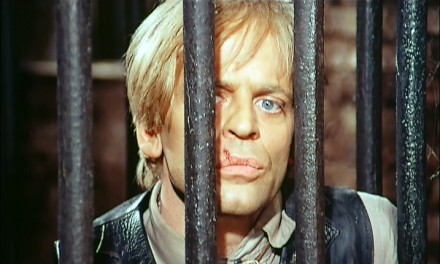
Klaus Kinski
Bibliography
Alex Cox. 10,000 Ways to Die: A Director’s Take on the Spaghetti Western. Harpenden, Herts: Kamera Books, 2009.
William McClain, “Western, Go Home! Sergio Leone and the ‘Death of the Western’ in American Film Criticism.” Journal of Film & Video, Spring/Summer 2010, Vol. 62 Issue 1/2, pp. 52-66
James Newton. “Turning the Western on its head: Simple subversion in Sergio Corbucci’s The Great Silence (1968)” Offscreen. November 30, 2011, Volume 15, Issue 11.



